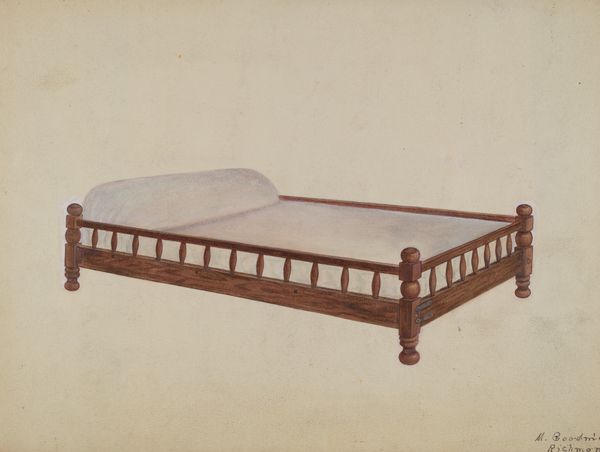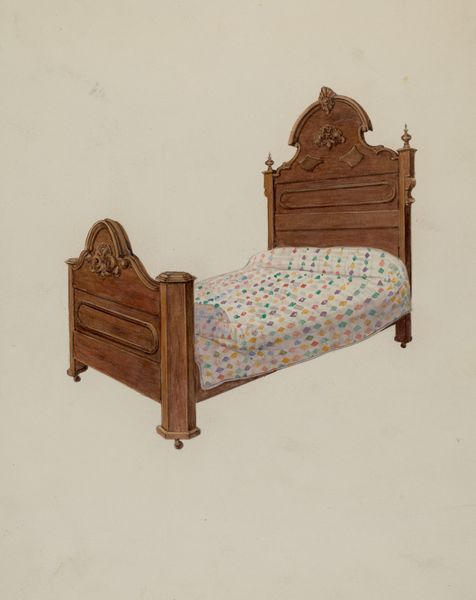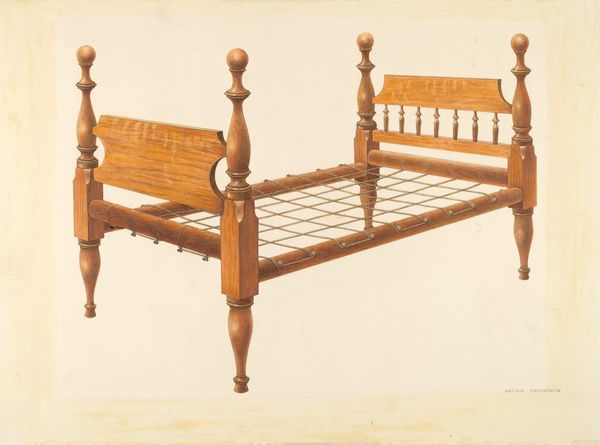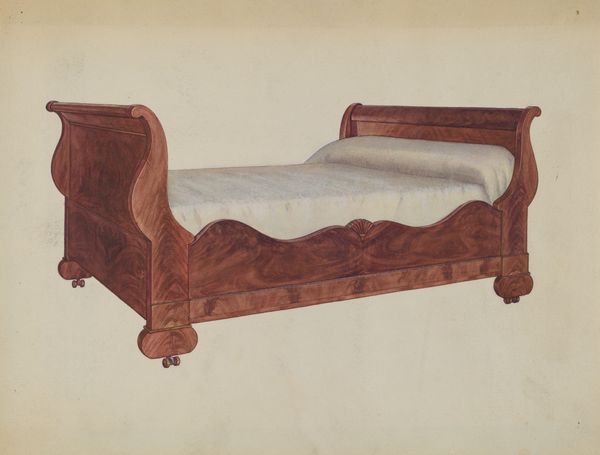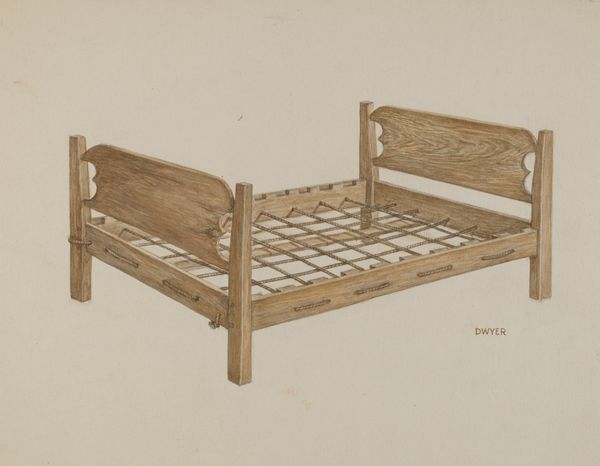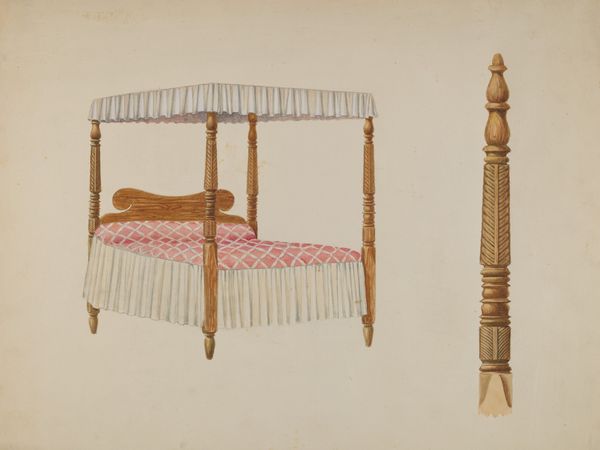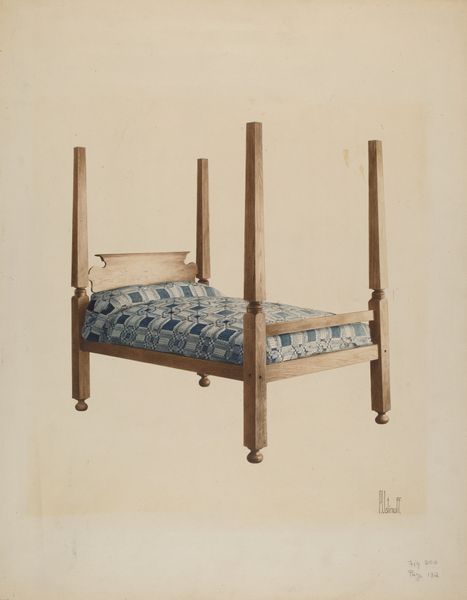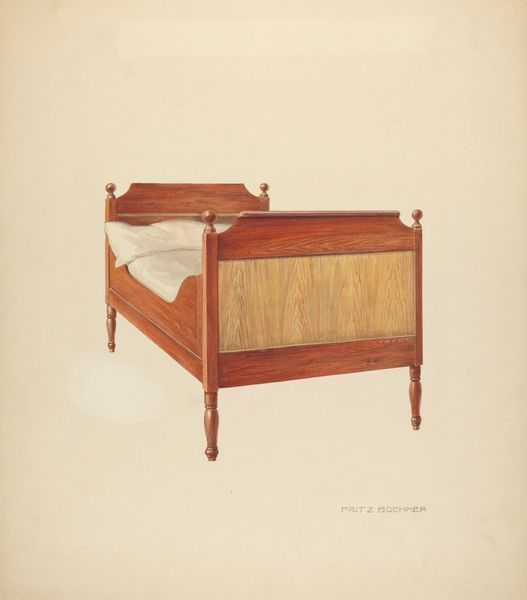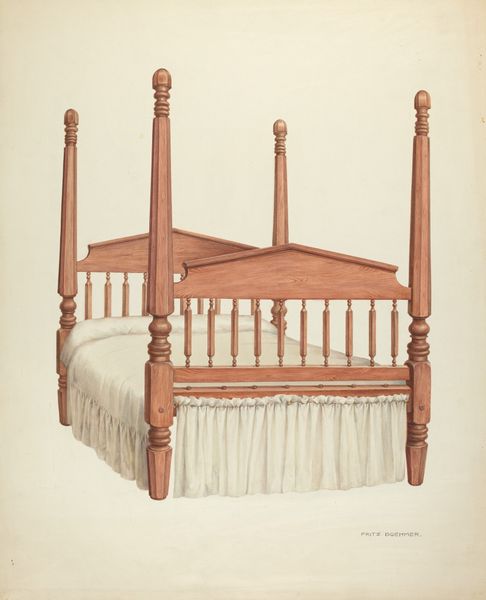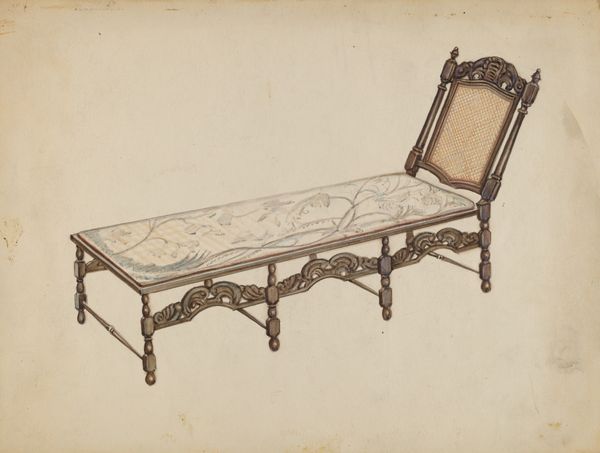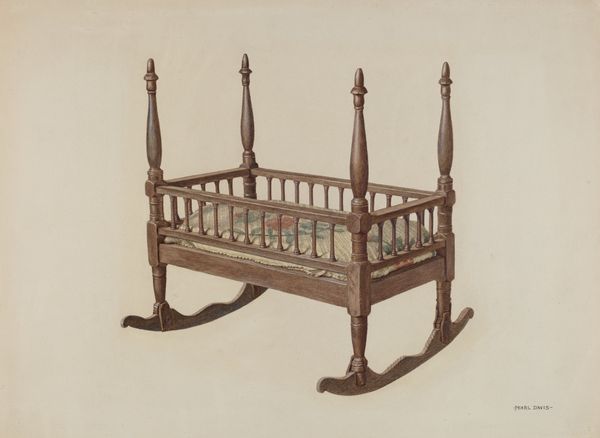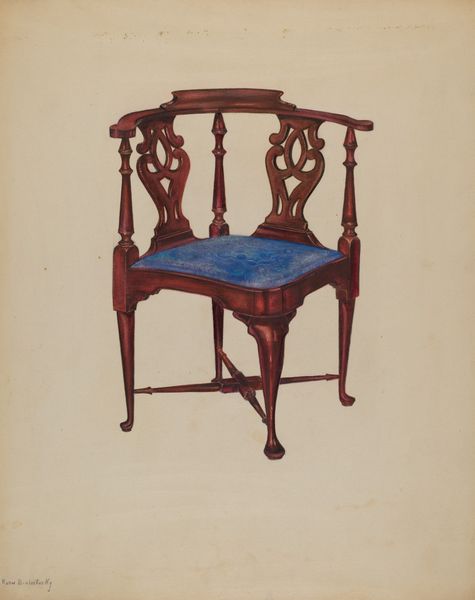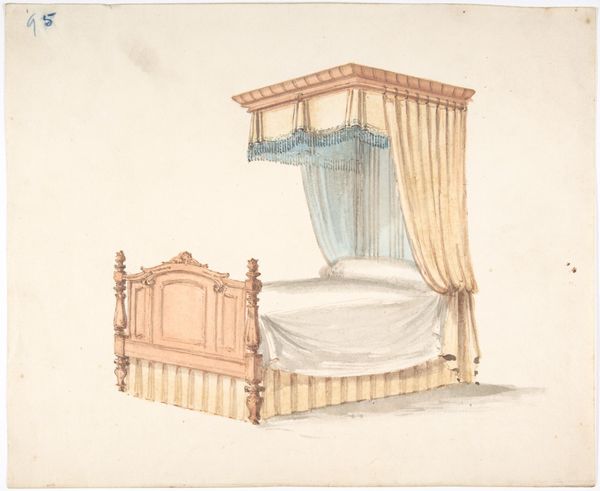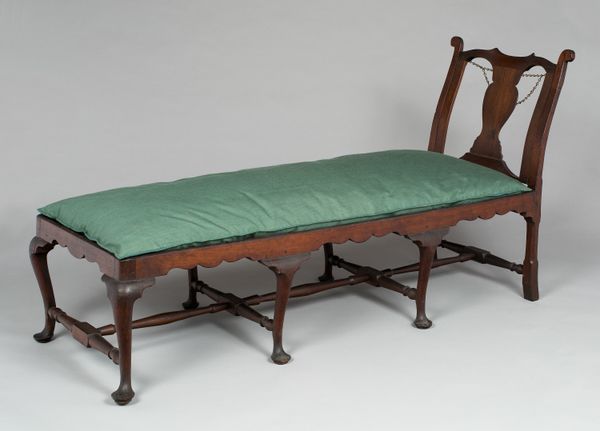
drawing, watercolor
#
drawing
#
water colours
#
landscape
#
watercolor
#
watercolor
#
realism
Dimensions: overall: 30.6 x 40.4 cm (12 1/16 x 15 7/8 in.) Original IAD Object: none given
Copyright: National Gallery of Art: CC0 1.0
Curator: This lovely watercolor, dating from around 1940, is titled "Small Day Bed" by Grace Bolser. It's rendered in realistic detail. What are your initial impressions? Editor: Well, the light wood of the bed frame contrasted against the blue and white of the quilt feels incredibly serene. There's a comforting simplicity, but also something a bit austere, like a Shaker design. Curator: It speaks volumes, doesn't it, about the American aesthetic of the time, a focus on utility blended with a restrained elegance, reflective of social values around simplicity and purpose during and after the Depression era. But I also wonder, what societal narrative did this promote by focusing only on the beauty and structure of the furniture? Editor: From a material perspective, consider the actual making: The wood was most likely locally sourced and processed, which represents craftsmanship, industry, and perhaps the availability of resources during that time. This suggests both independence and potential labor exploitation. Curator: Exactly, how does the representation of "simple" furniture reinforce a dominant narrative of frugality during economic austerity while masking potentially exploitative labor practices involved in both quilt-making and furniture production? Think about the role gender plays, too—was this seen as primarily women's labor? Editor: Definitely, this also begs the question of whether the quilt, with its block design, speaks to the role of women in the domestic sphere. They would craft useful and beautiful objects using textile remnants; the quilting, the precise cuts, stitches all represent labor. This links material practice with domestic life. Curator: I think understanding its value lies not just in appreciating the art's aesthetic quality but seeing its layered cultural context – class, labor, gender. How the object itself becomes a point of contention about social structures? Editor: It prompts a rethinking of 'simple' objects and connects it to broader political and economic situations during that specific period of manufacturing and societal change. Curator: Right, seeing "Small Day Bed" isn't just about a beautiful watercolour; it's about examining how seemingly innocent things embed much broader societal frameworks. Editor: It’s more than just furniture; it reveals unseen social fabrics if one takes the time to delve deeper.
Comments
No comments
Be the first to comment and join the conversation on the ultimate creative platform.
